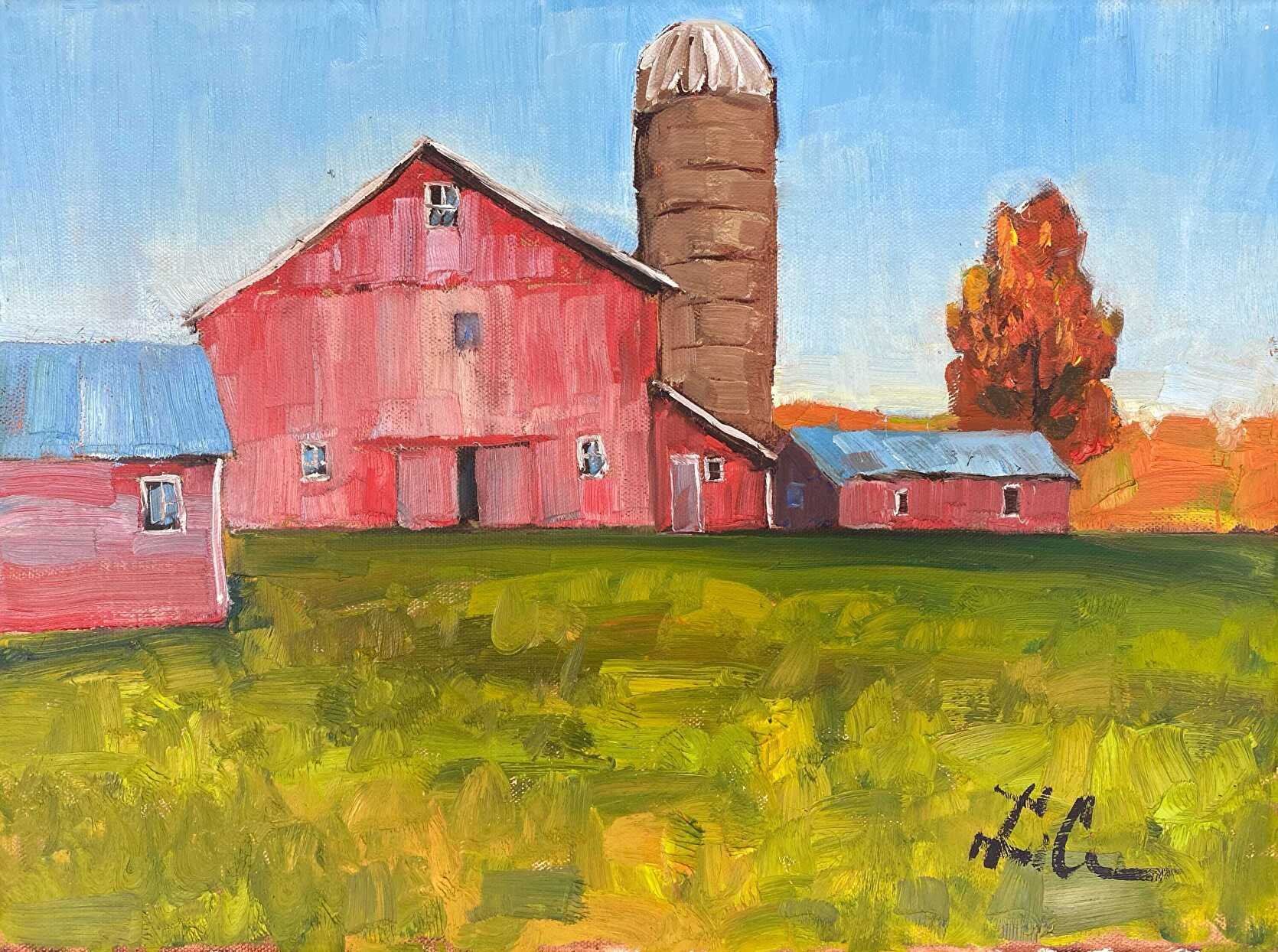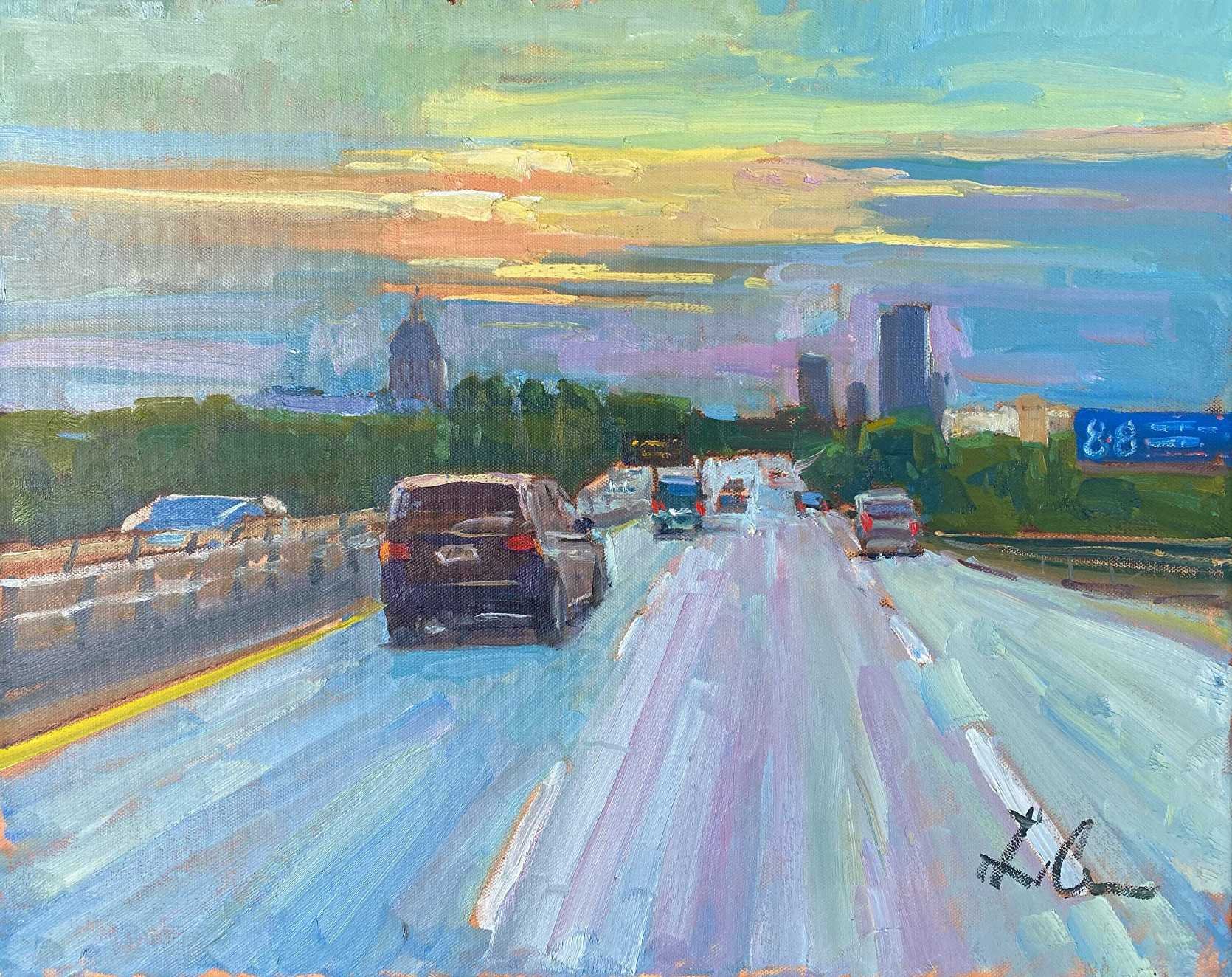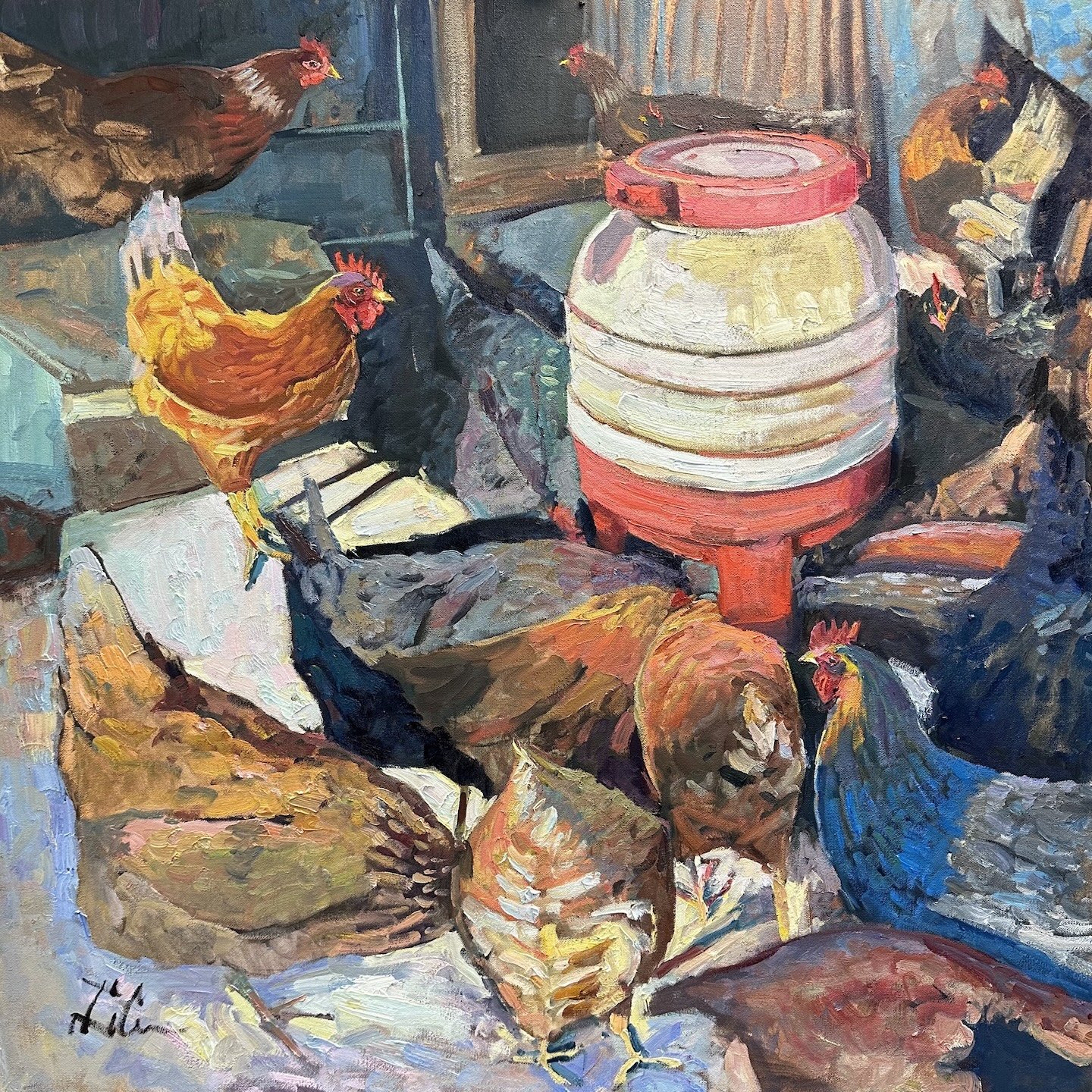Interview with artist Sean LeCrone
Sean LeCrone is an abstract impressionist painter who has lived most of his life in Arkansas. His Arkansas landscapes and scenes of Arkansas life are vibrant and joyous and he enjoys sharing his love of painting with students of any age. More of Sean’s work can be found at Art Group Gallery in Little Rock and at his website Sean Lecrone Fine Art.

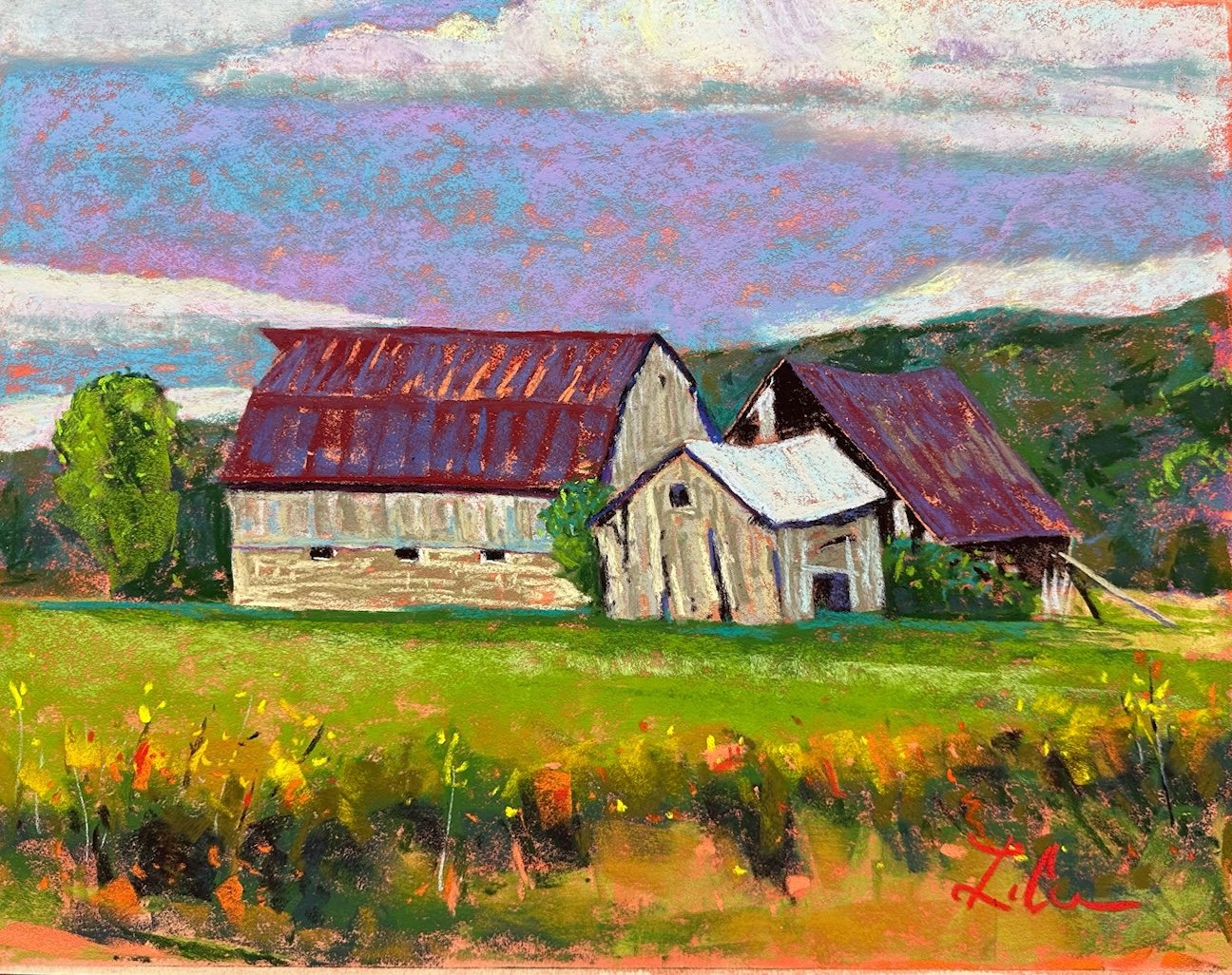
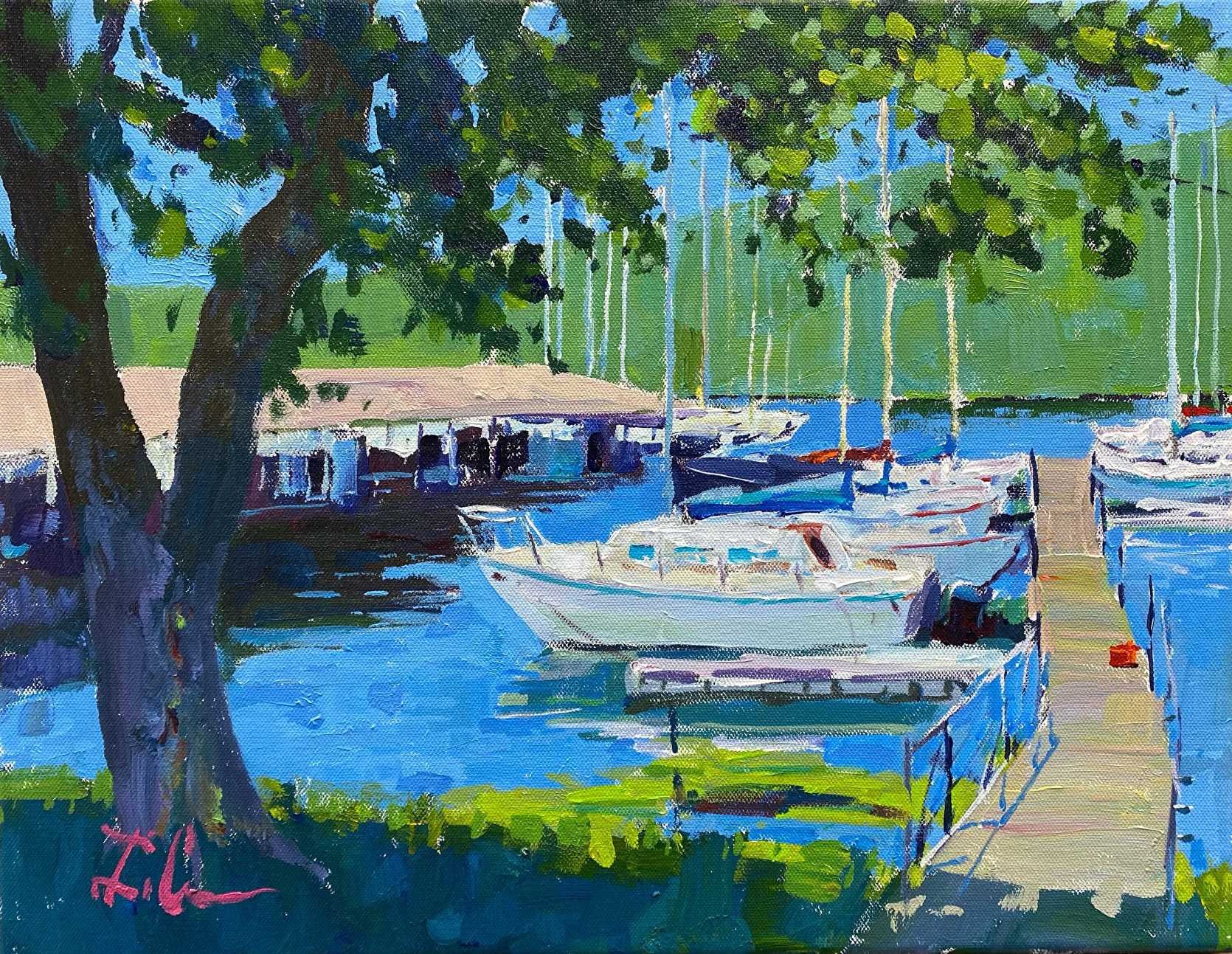
AAS: Sean are you an Arkansas native?
SL: I have lived in Arkansas since an early age, but I was born in Oklahoma. I consider myself an Arkansas native.
AAS: Was painting something you always did?
SL: I was always drawing or painting for as long as I can remember. I recall getting into trouble when I was four or five for distributing my artwork in the neighbor’s mailboxes. Drawing, especially, has been a habit of mine for my entire life.
I started my college career with the goal of getting an art degree, but I ended up with a computer science degree instead. I started painting again when I was in my 30s when my wife encouraged me to pick it back up and I have been painting as much as possible since then.
AAS: If I had to choose one word to describe your paintings, I would say luminous. I think Bluffs at Sylamore Creek is a good example of that. Describe for me your style of painting as it relates to that painting.
SL: This painting is very high-key, with the sun coming directly above. This is not my favorite time of day for a picture, but the colors appeared so strong that I had to give it a go. I liked it so much, I think I painted this location two times.
I almost always start with a monochromatic underpainting, but I started this one by applying tube colors immediately. The addition of some strong darks helps the colors come forward. Even though I painted this one in the studio, I wanted to approach it with a sense of urgency like I would have with an outdoor painting.
I think of my style as both impressionistic and abstract. At the start, I am looking for and painting large abstract shapes. This is kind of the skeleton that I hang details off of. It helps to work with a big brush at the beginning, moving to smaller brushes for detail work. The entire time, I am striving to put down singular marks and leave them alone. I want each step in the process to remain visible in the final painting.
Bluffs at Sylamore Creek, 12” x 16”, acrylic on canvas
AAS: What techniques do you use to achieve these effects?
SL: I’m not a very ‘clean’ painter. Maybe nobody is. But I use only a few brushes while painting and the brushes tend to fill up with color deep within the bristles. I don’t clean my brushes very well as I paint, and this lets me use the pressure of the brush to milk out some previous mixes as I go. This helps me to achieve broken color, which I think is necessary to interpret light well. I also try to echo various color notes throughout the canvas to achieve color harmony.
As I mentioned earlier, brushwork is something I put a lot of effort into. My goal is to make a mark and try to leave it alone in its place. I try to stand back from the painting and come at it with my shoulder or elbow to keep things loose. I want to take a fairly complex subject, as landscapes can be, and simplify it to as few marks as I can get away with.
Generally, I work thin to thick as the painting progresses, starting with my paint diluted appropriately to an inky consistency. I rapidly cover the canvas with these thin transparent mixtures. Then as the painting develops, I use thicker paint with a heavier application. My goal is variety and interest in all aspects of the painting, from color to shape and texture.
“I strive to have an abstract quality to my paintings when viewed up close, and if I do my job, it will resolve into a realistic depiction as the viewer gains distance.”
AAS: Another painting where your brush stokes so beautifully capture the essence of the landscape is Grand View. Tell me about that painting.
Grand View, 20” x 16”, oil on canvas
SL: This one was a fun one to paint. One thing I can say about this painting is that the strokes are very deliberate and placed with care. I strive to have an abstract quality to my paintings when viewed up close, and if I do my job, it will resolve into a realistic depiction as the viewer gains distance. Again, I started this one with a monochromatic underpainting using transparent oxide red. Then I slowly built the color layers on top of this. My favorite thing about this painting is the way a few marks can convey so much information.
AAS: You paint some wonderful scenes of farm life. Hen Party just explodes with color and expression.
Hen Party, 20” x 16”, pastel on sanded board
SL: Farm life is fascinating and it is a never-ending source of inspiration. This painting is done in soft pastel, which I have just started experimenting with this year. The pastel is so rich and vibrant that I couldn’t resist punching the color up. This is a new medium for me, which is probably why this painting has such an energetic feel.
I approached this pastel painting the same as I would have had it been an oil or acrylic painting. It started with a wash of color using alcohol as a medium. I then built-up color layers on top of this. It’s fun to paint using this medium. Finding the right piece of pastel and just the right angle to apply it to the surface is fun. In some ways its freeing to have hundreds of colors without having to mix them all and applying it is similar to painting with a brush — size and shape of a mark to state an idea as simply as possible.
“And I like to put on music and dance while I paint… I try to get my whole body into it.”
AAS: I want to ask you about Iris and Lavender. It is almost an abstraction, and I love the way you used different brush strokes and different applications of paint. What are you thinking about when you approach a new painting? Do you have it pretty much all in your mind or does it completely develop spontaneously?
Iris and Lavender, 24” x 20”, oil on canvas
SL: Iris and Lavender live at St. Joseph Center in North Little Rock. I volunteered there for a year, feeding the animals a morning each week. I had plenty of time to study the sheep in all sorts of conditions and I have painted the pair a few times.
To me, this painting is all about how the sky color influences the scene. There is no sky in the picture, but the blue of it is very prominent in the shadow side of things. The sheep's wool is tinted blue from the sky in the shadows, while the valleys deep in the wool are comparatively warm. I think this contrast helps give the picture its vibrancy.
When I approach a new painting, it is usually after some careful consideration. I want a strong and pleasing composition, so I think about the overall large shapes that will be present in the final picture and try to come up with an arrangement that is interesting and dynamic. I usually sketch this design out on the canvas using charcoal and then seal it with some fixative. As the painting develops, I try to keep an air of spontaneity. Colors are planned to a degree, but I often let the brush and previous passages of paint direct me where to go next.
I do enjoy the entire painting process, but it isn’t without a fair share of frustration and hair-pulling. For me, there is always a period of struggle in a work. I think this is where most aspiring artists give up. Overcoming these struggles is the road to growth as an artist, and I get the best feeling when I successfully conquer them.
I paint because I have a need to be creative - to create things. Achieving the ‘flow state’ when your consciousness takes a break and everything is just moving paint from there to here is relaxing. And I like to put on music and dance while I paint… I try to get my whole body into it.
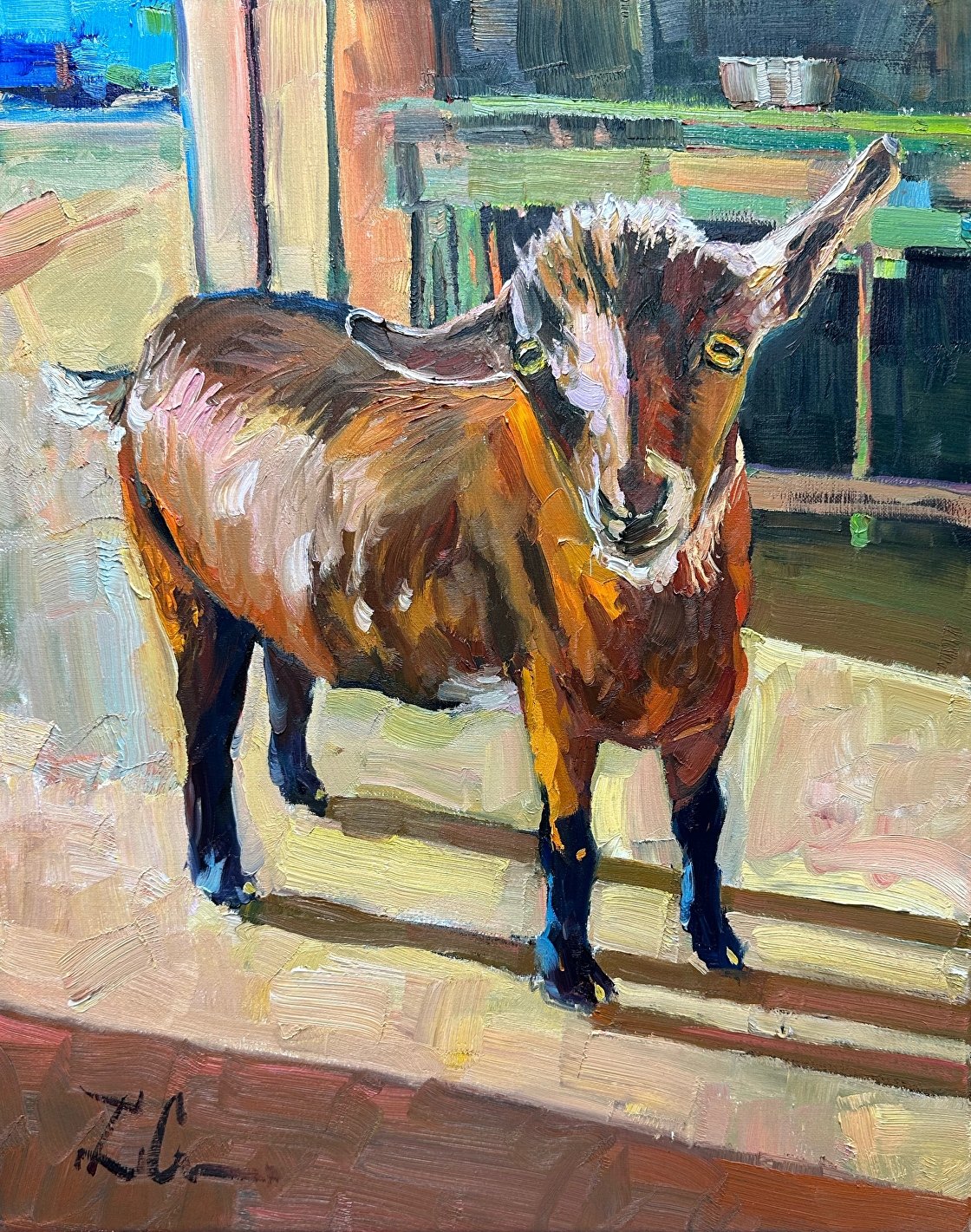
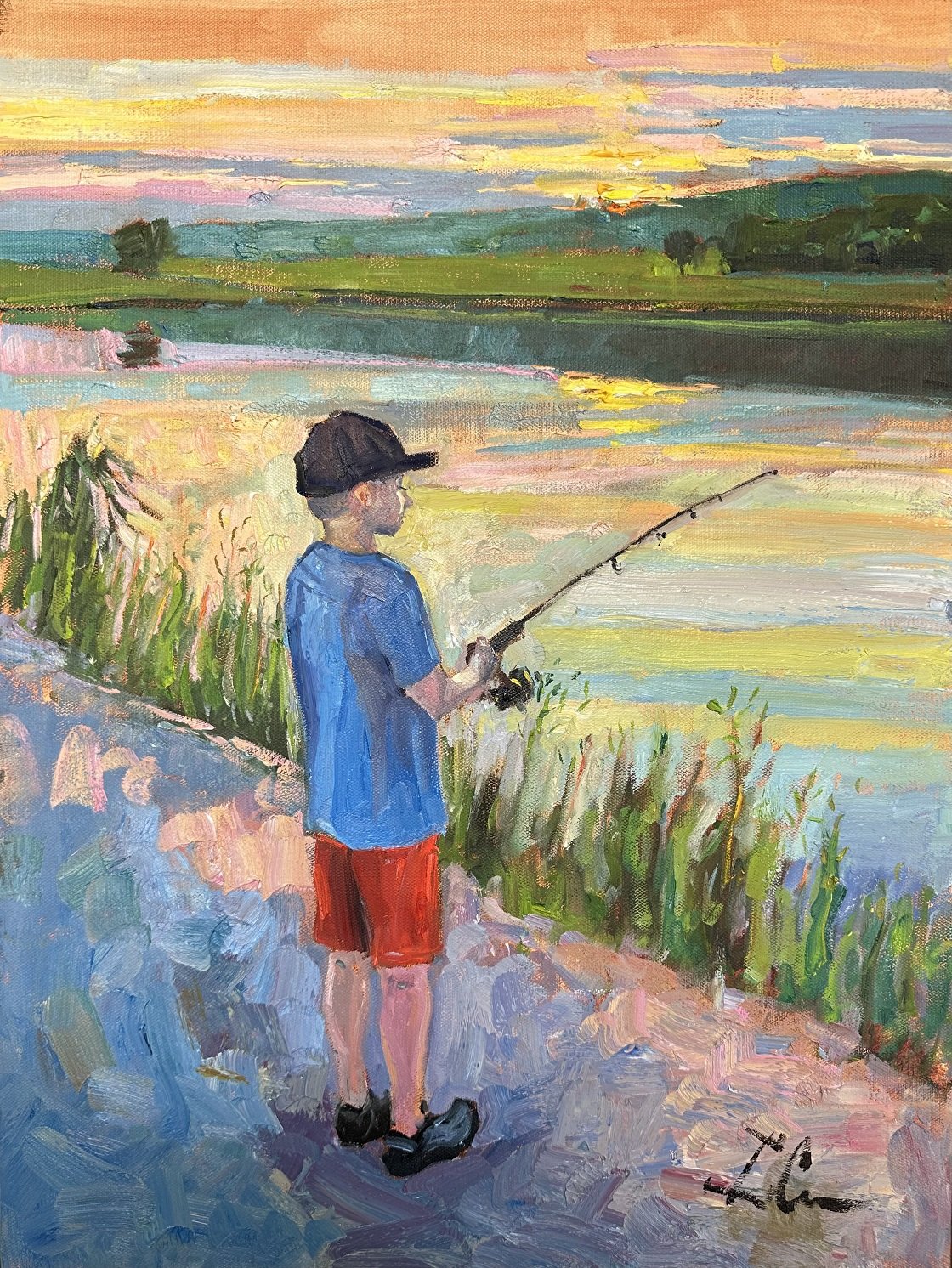
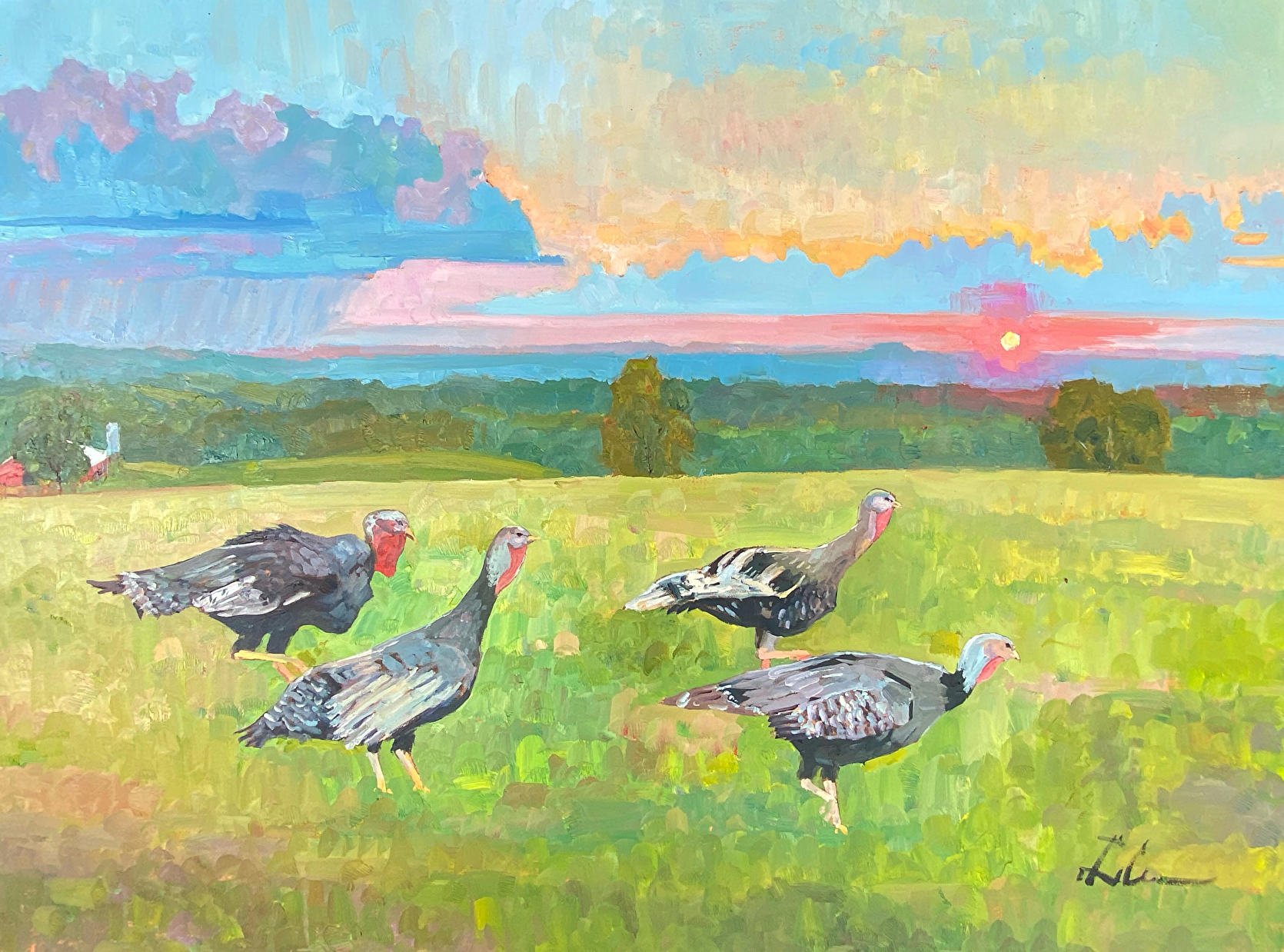
AAS: Do you think your background in computer science –distilling everything down to 1’s and 0’s– influences your style?
SL: I have often considered this question. It may not seem like it, but computer programming is an exercise in creative problem-solving, much like painting. I do have what I call an ‘algorithmic’ approach to painting, especially at the start of a new work. It’s reassuring to have some ‘rules’ or ‘steps’ to follow when starting a painting. Computer work is an excellent complement to my painting, and I enjoy both for the same reason — building something out of nothing. I get painting ideas while I’m coding and I get coding ideas while I’m painting.
AAS: Maybe my most favorite painting of yours is Morning Paddlers. It is just marvelous. Is there a story behind it?
Morning Paddlers, 48” x 24”, oil on canvas
SL: Morning Paddlers is a large studio painting I developed from a sketch. I was looking for something to paint down at the river and found these paddlers putting in early in the morning. When I think about this painting, I can feel what the sun was like that day and almost smell the air. My best paintings come from a strong emotional response or a favorite memory, and I think that comes through in this painting.
I broke this painting down into two halves. The bottom half is very loose and abstract, having a lot of vertical movement where the rocks and foliage are closest to the viewer. The more realistic part of the painting is very horizontal and kind of sits on top of the abstract lower half. So, in a way, these are two paintings stacked together. If I recall correctly, I washed the entire canvas in Indian yellow before I did anything else. Some of this yellow color from the initial wash shows through in various places, which gives the painting a palpable warmth.
I work primarily from photographs in my studio, but it’s important to have the experience of painting from life when using a photo reference. The photo is not the same as what you would see in nature firsthand, and knowing its limitations and having life experience to fill in gaps is crucial. I probably spent about 20-30 hours on this painting. This is typical of larger works for me. I work in layers where I let each layer or area dry before continuing. I mainly developed this approach while working full-time and had limited painting time. So, this painting might have been on the easel at various times over a three-week period.
AAS: Do you do any teaching or conduct any workshops?
SL: Yes, I teach painting in acrylic and oil at the Art Group Gallery from 9am to 12pm on Wednesday mornings (and I have some spots open). We have established a lovely classroom in the back of the gallery space where several gallery artists are now teaching.
I have been teaching painting for over five years and this has heavily influenced my work. Helping others work through their problems and get a decent picture is the best method of informing my work. Teaching has helped me formalize my approach to painting, and I find it very rewarding. I’ve also volunteered as a teacher in the LifeQuest program offered by Second Presbyterian church on Pleasant Valley Drive and done numerous demos for local art groups.
I’m primarily self-taught as an oil painter. However, I did take a few workshops from Bill Garrison. Bill is a respected Arkansas landscape painter, and I owe a lot of my success to his teachings. I’m grateful to many artists for leading me on my artistic journey, but none more than Bill.
